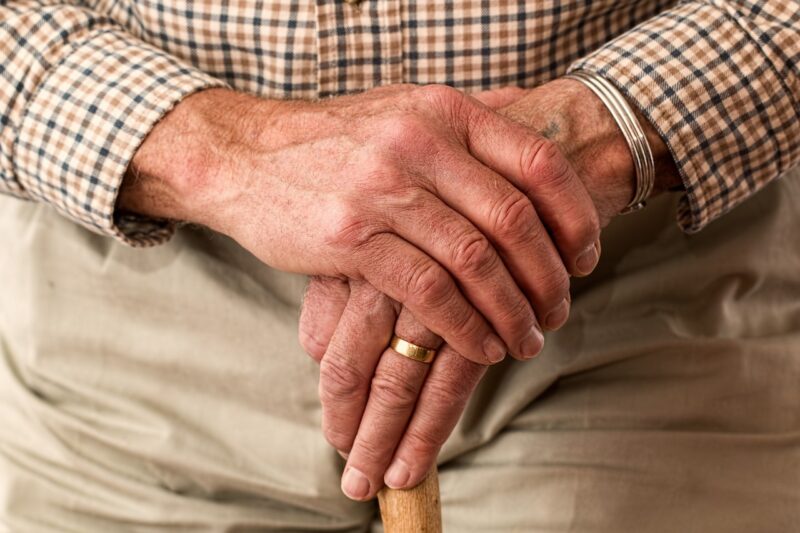A Guide to Caring for Senior Dogs: How to Support Aging Canines
November 15, 2024

As dogs age, they become more than just furry companions—they become cherished members of the family who deserve specialized care. Senior dogs, generally considered to be those aged seven and older, may face unique challenges that require pet owners to adopt new strategies for their care. From health considerations and proper nutrition to physical activity and mental stimulation, this guide will provide you with the essential knowledge and tips to help support your aging canine friend.
1. Understanding the Aging Process in Dogs
Aging is a natural part of a dog’s life cycle, but it can manifest in several ways. As dogs grow older, they may experience changes in their physical appearance, energy levels, behavior, and overall health. Some common signs that your dog may be entering their senior years include:
- Weight Changes: Senior dogs may gain or lose weight due to changes in metabolism and activity levels.
- Joint Stiffness: Many aging dogs suffer from arthritis or joint discomfort, making it harder for them to move around.
- Changes in Sleep Patterns: Older dogs often sleep more than their younger counterparts and may exhibit changes in sleep habits.
- Cognitive Decline: Similar to humans, dogs can experience cognitive decline as they age, leading to confusion or difficulty in learning new commands.
Understanding these changes allows owners to adapt their approach to care, ensuring a higher quality of life for their senior dogs.
2. Nutrition for Senior Dogs
Proper nutrition is crucial for the health of senior dogs. As dogs age, their nutritional requirements may change. Providing them with high-quality, age-appropriate food can help maintain their health and energy levels.
- Choose Premium Dog Food: Look for dog food specifically formulated for senior dogs, which typically contains higher levels of fiber, fewer calories, and added nutrients to support older dog health, such as glucosamine for joint health.
- Monitor Weight: Keep track of your dog’s weight changes, as obesity can lead to additional health issues, including joint problems and diabetes. Adjust portion sizes as needed or consult your veterinarian for guidance.
- Provide Supplements: Depending on your dog’s specific needs, you may consider supplements such as omega fatty acids for skin health or probiotics for digestive support. Always consult your vet before introducing supplements into your dog’s diet.
- Stay Hydrated: Ensure that your senior dog has constant access to fresh water. Dehydration can lead to numerous health issues, so check that your dog is drinking enough water daily.
Maintaining proper nutrition is key to keeping your senior dog healthy and energized well into their golden years.
3. Regular Veterinary Check-ups
Frequent veterinary check-ups become even more critical as your dog transitions into its senior years. Regular health evaluations can help detect health issues early and manage any concerns before they escalate. Here’s what to prioritize:
- Biannual Vet Visits: Schedule vet appointments every six months. Regular check-ups can include blood tests, dental exams, and physical assessments to monitor your dog’s health more closely.
- Vaccination Updates: Ensure your dog’s vaccinations are up to date, especially for diseases they may still be susceptible to as their immune systems weaken with age.
- Dental Health: Oral health is often overlooked but is essential for a senior dog’s overall well-being. Discuss dental cleanings and home care options with your veterinarian.
- Monitor for Symptoms: Be attentive to changes in appetite, behavior, or mobility as these can be indicators of underlying health issues. Communicate any such changes to your veterinarian promptly.
Regular veterinary care is essential in ensuring your senior dog remains healthy and happy.
4. Exercise: Keeping Your Senior Dog Active
While senior dogs may not have the same energy levels they once did, regular physical activity is crucial for their well-being. Exercise helps to maintain muscle mass, support joint flexibility, and encourages mental stimulation.
- Shorter Walks: Instead of one long walk, consider multiple shorter walks throughout the day. This helps to reduce joint strain while providing necessary exercise and stimulation.
- Gentle Play: Engage in gentle games, like fetch or tug-of-war, tailored to your dog’s physical abilities. This encourages movement without overexertion.
- Swimming: Swimming can be an excellent low-impact exercise for senior dogs. It’s gentle on their joints while allowing them to enjoy physical activity. Ensure safety through supervision and flotation devices if needed.
- Mental Stimulation: Activity isn’t limited to physical exercise. Consider puzzle toys, training sessions, or scent games to keep your dog’s mind sharp and engaged.
Combining both physical and mental exercises ensures your senior dog remains active and engaged in their environments.
5. Providing Comfort and Mobility Assistance
As dogs age, their comfort and mobility needs change. Ensuring your senior dog is comfortable can greatly enhance their quality of life. Here are some accommodations you might consider:
- Orthopedic Beds: Provide a supportive bed designed for seniors to alleviate joint pain and offer better rest. Look for beds with memory foam or additional padding for comfort.
- Mobility Aids: Consider investing in ramps or harnesses that assist your dog in navigating stairs or entering vehicles. These aids can help prevent injury and boost their independence.
- Home Adjustments: Create a senior-friendly environment by padding sharp furniture edges, using non-slip mats, and ensuring easy access to food and water bowls.
- Maintain a Routine: Senior dogs thrive on routine, so maintain consistent meal and exercise times to reduce stress and confusion.
Providing comfort and mobility assistance can greatly improve your senior dog’s quality of life and overall happiness.
6. Mental Stimulation and Emotional Support
As dogs age, mental stimulation becomes increasingly vital. Senior dogs might face cognitive decline and emotional changes, so providing mental engagement is crucial:
- Interactive Toys: Invest in toys that encourage problem-solving and engage your dog’s natural instincts. Puzzle toys, treat-dispensing toys, or interactive games can keep them mentally sharp.
- Training Sessions: Refresh your dog’s memory with basic commands or teach them new tricks. This not only stimulates their brain but also strengthens your bond.
- Positive Reinforcement: Be patient and supportive as your dog ages. Offer positive reinforcement for accomplishments, no matter how small, to encourage further engagement and confidence.
- Quality Time: Spend time cuddling, petting, or simply sitting with your senior dog. Emotional support is just as crucial as physical care, so ensure they feel loved and valued.
Incorporating mental stimulation and emotional support can make a significant difference in your senior dog’s happiness and well-being.
Conclusion
Caring for senior dogs requires a keen understanding of their changing needs and a commitment to providing them with the love, support, and attention they deserve. By paying close attention to their nutrition, health, exercise, comfort, and mental well-being, you can help your aging canine navigate their later years with grace and dignity. Senior dogs enrich our lives in ways we cannot measure, and with the right care, they can continue to bring joy and companionship into our homes for many years to come.







